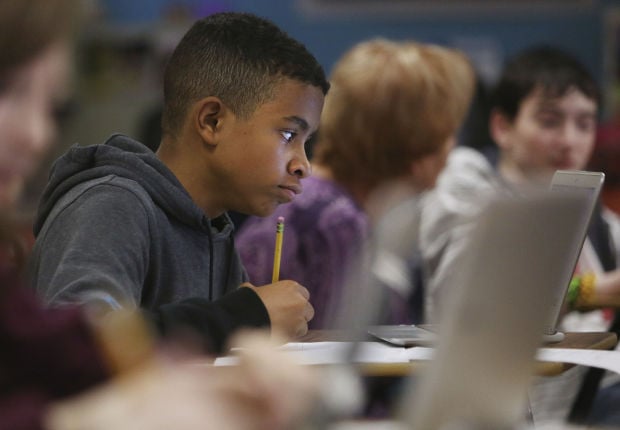PHOENIX — A new report Thursday said state funding of public schools will still be $863 million below pre-recession levels, even if voters approve taking more money out of the state land trust fund to use for education.
The analysis by the Children’s Action Alliance comes as the Center on Budget and Policy Priorities finds that Arizona cut a bigger chunk out of education funding between 2009 and 2014 than any other state. It pegged the loss in dollars at 23.3 percent.
Arizona, which was heavily dependent on revenues from population growth and construction, got hit particularly hard when the housing bubble burst.
Even with funds put back into education spending in the past two years, state aid to students in Arizona is still close to 15 percent less than in 2009 when inflation is taken into account, said Dana Naimark, president of the Children’s Action Alliance.
In an election set for next May, voters are being asked to tap into the trust account, funds already set aside for schools, to settle a lawsuit over the failure of lawmakers to boost state aid to education annually to compensate for inflation.
But Naimark figures Proposition 123 will do little to make up for all the cuts lawmakers have made. She said even if voters approve the new funds, total aid to education will still be $600 million less than it was in 2009 in real dollars — and $863 million less if inflation is taken into account.
Education leaders said Thursday that none of that should deter voters from supporting Proposition 123. Instead, they said, Arizonans should see it as a down payment on finally properly funding schools.
“If we’re really going to rebuild funding, then there has to be something that represents the first step,” said Andrew Morrill, president of the Arizona Education Association. He said the ballot measure does that.
Tim Ogle, executive director of the Arizona School Boards Association, said it’s important that voters and lawmakers understand what Proposition 123 does and does not do.
“This resolves one piece of the funding formula,” he said: the mandate for annual inflation adjustments that legislators did not make for years. “But as to changing direction of school finance, it does not do that.”
But Morrill said voters being asked to support Proposition 123 on May 17 are also going to pay attention to something else: whether lawmakers approve tax cuts in the spring.
“We have an unusual situation going into this (legislative) session because voters have the opportunity to look at the Legislature, look at the agenda of the governor, and then vote,” he said.
“If we go into this legislative session, we start stripping away revenue, and we don’t have any serious conversations about other aspects of education funding that need to be restored, that may end up sending a very negative message to voters.”
Naimark was more pronounced in her concerns.
She pointed out the plan takes money already earmarked for K-12 schools to make up for the Legislature’s failure to meet its legal commitment to use tax dollars to make annual inflation adjustments. Naimark said voters won’t like the idea of raiding their own funds so lawmakers can use tax dollars for something else, like tax cuts.
More significant, Naimark said Proposition 123 is a temporary solution: The extra dollars it would provide disappear in 2025.
“The kids that are in kindergarten today will be in 10th grade when that money runs out,” she said. “If we have nothing (new in state funding) at the end of that, what have we done?”
Gov. Doug Ducey agrees that Proposition 123 is not the last word, said his press aide, Daniel Scarpinato.
“He’s been very clear this is a first step, a very big first step,” Scarpinato said. And he said the governor will “continue to advocate for public schools.”
Scarpinato said he could provide no details regarding what more Ducey will propose in new funding.
He said the main priority is keeping the state budget balanced. Then, using what funds are available, Ducey will make “targeted investments in key areas, including K-12,” Scarpinato said.
There is no assurance there will be an across-the-board increase in per-student funding. Scarpinato cited work being done by the governor’s Classrooms First Council to provide funding “in a way that really rewards student achievement.”
“We’re going to look not just at how much we’re spending overall but are we spending it in the right areas,” he said.
There is another issue: Cutting revenues even as educators look for a permanent long-term funding increase. Ducey campaigned on a promise to propose new tax cuts every year. Again, Scarpinato said he could provide no details.
“We are still working through the budget and the legislative agenda for next session,” he said, saying Ducey will “take a responsible approach” to both revenues and expenditures.





